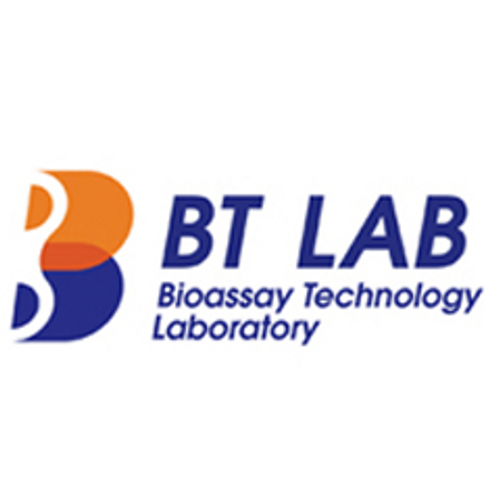Product Description
Rat Tyrosine kinase with immunoglobulin-like and EGF-like domains 2 (Tie-2) ELISA Kit | AE59663RA | Abebio
Species Reactivity: Rat (Rattus norvegicus)
Abbreviation: Tie-2
Alternative Name: N/A
Application: ELISA
Range: 0.312-20 ng/mL
Sensitivity: 0.135 ng/mL
Intra-Assay: ≤4.2%
Inter-Assay: ≤8.1%
Recovery: 0, 88
Sample Type: Serum, Plasma, Other biological fluids
Detection Method: Sandwich
Analysis Method : Quantitive
Test Principale: This assay employs a two-site sandwich ELISA to quantitate Tie-2 in samples. An antibody specific for Tie-2 has been pre-coated onto a microplate. Standards and samples are pipetted into the wells and anyTie-2 present is bound by the immobilized antibody. After removing any unbound substances, a biotin-conjugated antibody specific for Tie-2 is added to the wells. After washing, Streptavidin conjugated Horseradish Peroxidase (HRP) is added to the wells. Following a wash to remove any unbound avidin-enzyme reagent, a substrate solution is added to the wells and color develops in proportion to the amount of Tie-2 bound in the initial step. The color development is stopped and the intensity of the color is measured.
Product Overview: Tie-2 is a receptor tyrosine kinase that is expressed primarily on endothelial cells (ECs) and plays a critical role in vascular development. The Tie-2 gene encodes a protein of 1122 amino acids. The extracellular region has three distinct structural motifs including two immunoglobulin (Ig) -like loops separated by three EGF-like repeats, and three repeats with fibronectin type III homology located after the second Ig loop. The intracellular portion of Tie-2 contains two tyrosine kinase domains that, when phosphorylated, interact with a number of binding partners including Grb2, Grb7, Grb14, Shp2, the p85 subunit of phosphatidylinositol 3-kinase (PI3K), and Dok-R. Deletion of the last 16 amino acids of the intracellular C-terminus results in increased levels of autophosphorylation, suggesting that it may play an autoinhibitory role.
Stability: The stability of ELISA kit is determined by the loss rate of activity. The loss rate of this kit is less than 5% within the expiration date under appropriate storage condition. The loss rate was determined by accelerated thermal degradation test. Keep the kit at 37°C for 4 and 7 days, and compare O.D.values of the kit kept at 37°C with that of at recommended temperature. (referring from China Biological Products Standard, which was calculated by the Arrhenius equation. For ELISA kit, 4 days storage at 37°C can be considered as 6 months at 2 - 8°C, which means 7 days at 37°C equaling 12 months at 2 - 8°C) .
 Euro
Euro
 USD
USD
 British Pound
British Pound
 NULL
NULL












